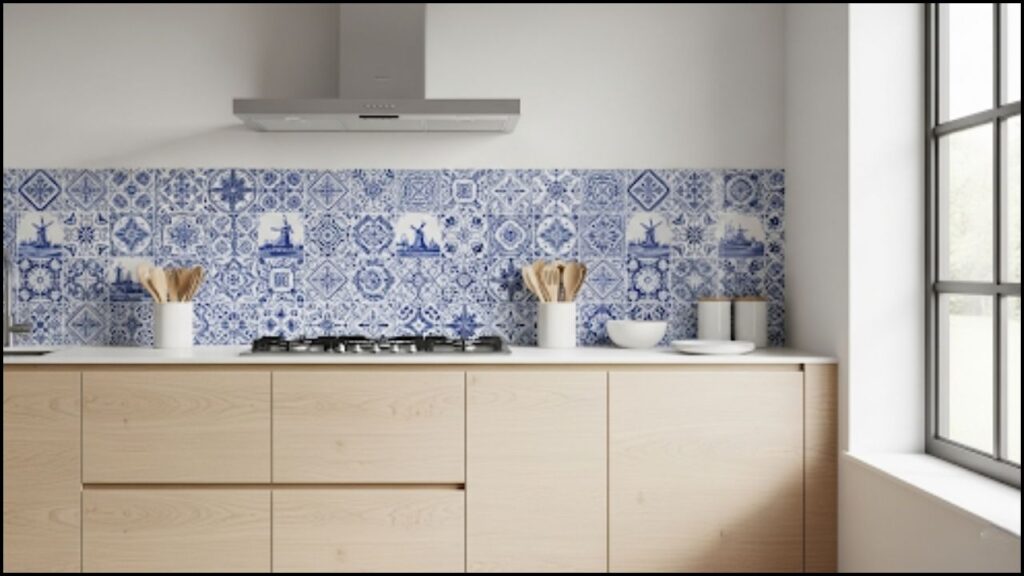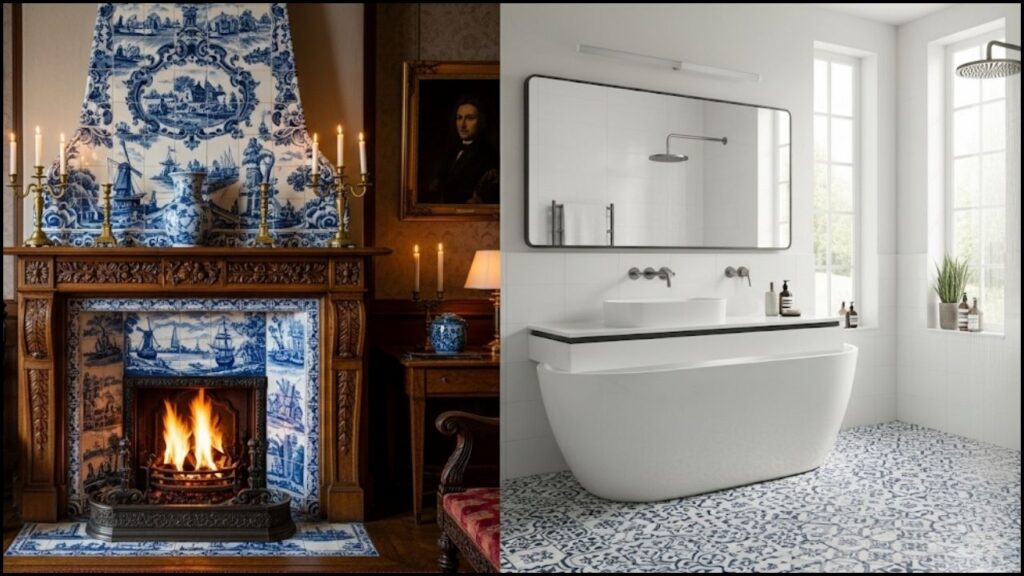
A centuries-old ceramic art form is finding new life in contemporary homes, as the Delft tile trend sees a major resurgence in 2025. Interior designers and homeowners are increasingly turning to the iconic Dutch blue-and-white pottery, but with a distinctly modern approach that favors bold applications, eclectic patterns, and a departure from strictly traditional installations.
Delft Tile Trend Surges in 2025
| Key Insight | Detail |
| Modern Application | Designers are using Delft tiles in unexpected areas like shower surrounds, laundry rooms, and full-wall murals, not just traditional fireplace hearths. |
| Shift in Aesthetics | The trend moves beyond classic pastoral scenes to include geometric patterns, abstract designs, and large-scale single-tile motifs. |
| Market Growth | Demand for artisanal and historic ceramics has grown an estimated 15% over the past two years, with specialty tile makers reporting backlogs. |
The Modern Revival of a 17th-Century Classic
What was once relegated to historical restorations and country kitchens is now a focal point of modern interior design. The renewed interest moves beyond simple nostalgia, reflecting a broader consumer desire for craftsmanship, authenticity, and personalized spaces in an era of mass production.
“We’re seeing a clear shift away from the stark minimalism that dominated the last decade,” said Chloe Rivas, a New York-based interior designer and founder of Rivas Design Group. “Clients want texture, history, and a story. The Delft tile trend delivers this, but it’s not a simple copy-paste of the past. It’s about reinterpretation.”
This reinterpretation involves using the tiles in novel ways. Instead of a small, uniform backsplash, designers are creating entire feature walls. They are mixing historic motifs with contemporary plain tiles or pairing them with industrial materials like concrete and steel, creating a dynamic visual contrast.

What Defines the 2025 Delft Tile Trend?
Experts point to several key characteristics that distinguish the current movement from previous revivals. The focus has shifted from uniform perfection to a more curated and sometimes unconventional aesthetic.
Eclectic and Asymmetrical Layouts
Rather than repeating a single pattern, designers are creating “patchwork” or “quilted” effects by mixing various tile designs across a single surface. This approach allows for a more personalized and artistic expression. Some high-end projects even commission custom tiles that tell a personal family story, a modern take on the narrative scenes of the 17th century.
A New Color Palette
While the classic cobalt blue on a white tin-glaze remains the hallmark, some modern manufacturers are experimenting with the form. “We’re seeing new interpretations with charcoal, green, or even black designs on the traditional white background,” states a recent market report from Global Home Decor Analytics, a London-based market research firm. This subtle evolution helps the tiles integrate with a wider range of contemporary color schemes.
From Dutch Golden Age to Global Homes: A Brief History
To understand the current trend, one must look to its origins. Delftware, or Delft Blue, emerged in the city of Delft in the Netherlands during the 17th century. Dutch potters, inspired by the blue-and-white porcelain imported from China during the Ming dynasty, developed their own tin-glazed earthenware.
“Delftware was the original ‘global-inspired’ home good,” explained Dr. Alistair Finch, a ceramics historian at the European Design Institute in a recent interview. “It represented worldliness and sophistication. Each tile was hand-painted, often depicting scenes of Dutch life—windmills, ships, landscapes—making them tiny works of art.” This connection to bespoke craftsmanship is a major driver of its current appeal. As consumers seek alternatives to homogenous, factory-made goods, the slight imperfections and unique character of hand-painted historic ceramics have become highly valued.
Economic and Cultural Drivers of the Resurgence
The rise of the Delft tile trend is not happening in a vacuum. It aligns with several broader cultural and economic shifts. The post-pandemic focus on the home as a sanctuary has fueled investment in creating more meaningful and comfortable living spaces.
Furthermore, social media platforms like Instagram and Pinterest have played a significant role in popularizing the aesthetic. High-contrast, visually rich interiors featuring blue and white pottery perform well online, inspiring homeowners and providing a direct channel for designers to showcase their work. “A well-executed Delft tile installation is incredibly photogenic,” Rivas notes. “It has a graphic quality that is both timeless and perfectly suited for the digital age.”
This digital visibility has also spurred a new generation of ceramicists and small-batch tile companies, making unique designs more accessible than ever before. While authentic antique tiles can be prohibitively expensive, numerous companies now offer high-quality reproductions and modern interpretations at various price points, democratizing the trend for a broader market. The future of this trend may see it evolve further, perhaps incorporating new technologies like digital printing to create hyper-customized patterns.
